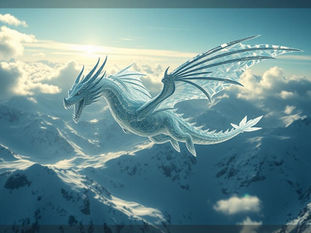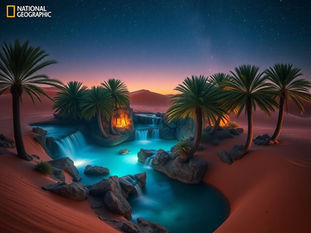
Guide to Realistic Fashion Photography with Midjourney V6
Apr 29
4 min read
0
53
0

Want to create amazing fashion photos using AI? Midjourney V6 is a powerful tool for generating realistic images, including stunning fashion concepts. This guide breaks down how to go beyond basic prompts and use specific keywords and techniques to get the looks you want.
Starting with the Basics
To make fashion images look realistic, you can start by adding "fashion photography" to your prompt. Then, describe your subject and outfit. A simple way to connect the two is by using the word "wearing."
For example:
fashion photography, a woman wearing a red dress
Using Atomic Prompting for Detail
Midjourney V6 lets you get very specific. Instead of just saying "wearing an outfit," you can break it down into individual clothing items. This is called "atomic prompting." You can describe pants, shirts, dresses, footwear, and accessories separately.
You can also add details like:
Brands
Colors
Shapes
Styles
Designers
Combining these elements helps you build a complete look for your image. For instance, you could prompt for "fashion photography, man, yellow jacket with dog patterns, urban exploration location." Adding location keywords brings interesting backgrounds.
Different Types of Fashion Photos
Beyond general "fashion photography," other keywords change the feel of the image:
Fashion photography: Shows clothing, often staged.
Glamour photography: Tends to smooth skin and reduce imperfections.
Magazine photo: Often places models in outdoor or varied settings.
Modern fashion photo: Similar to magazine style, often outside a studio.
High fashion photo: Generally creates images with expensive-looking styles.
Experimenting with these can give you different visual results.
Getting Full Body Shots
Midjourney has improved a lot with full body images. Adding "full body photo" at the start of your prompt makes it much more likely you'll get at least one full body image in the grid. While this is easier now, sometimes face details may vary, but the Midjourney team is working on improvements.
Using Style Reference for Consistency
Style reference (using `--sref` and an image URL) is great for keeping a consistent look across multiple images. This is perfect for creating a fashion collection or brand merchandise.
You can create an initial concept, then use its style URL with `--sref` in new prompts to generate variations that share the same visual style. You can even switch photography types, like using "product photography" while keeping the style reference, to create product shots of your designs.
Creating consistent collections or variations often involves managing and testing many prompts. A tool like the TitanXT Midjourney Automator can help you streamline this process, making it easy to generate and organize concepts based on consistent styles or themes.
Character Reference Explained
While style reference copies the overall look, character reference (TitanXT Midjourney Automator) focuses on keeping the same character's face across different images. This is useful if you want to show one model wearing many different outfits, allowing you to experiment with styles without changing the person.
Playing with Style and Brand Keywords
Midjourney can replicate the feel of many fashion styles. Keywords like "Bohemian," "minimalist fashion," or "maximalist fashion" have a strong effect.
Minimalist fashion: Creates simpler garments, less crowded images, basic textures and cuts.
Maximalist fashion: Adds more detail, layers, depth, and sometimes crowded backgrounds.
You can even mix them, like having a minimalist outfit in a maximalist scene. Midjourney also understands references to well-known brands, allowing you to replicate their visual characteristics (though these images are AI-generated and not real brand products).
Material and Texture Effects
Using material keywords lets you design unique textures and fabrics. Midjourney V6 allows mixing different materials and colors.
You can even explore physical properties of materials like:
Reflections or refractions
Optical appearance
Chromism (color changing properties)
Luminescence (glowing)
Various texture types
These keywords help change the look of outfits, decorations, or even products in your images. It's a fun way to invent unseen fashion concepts.
Adding Time Periods and Culture
Fashion is influenced by time. Adding a specific year early in your prompt can guide the overall look towards a particular era. Unlike decades, years can be more precise as fashion trends change quickly within a ten-year span.
For older eras, using centuries can also influence the style. Cultural keywords from different countries can also bring unique fashion elements into your AI images, reflecting traditional or modern styles with global impact.
Understanding Stylized Parameter
The `--s` (stylized) parameter affects how much Midjourney applies its default aesthetics. With fashion, this parameter often gives great results because Midjourney is likely trained heavily on fashion photo data.
Lower `--s` values (`--s 100`, `--s 250`) tend to follow your prompt keywords more literally, especially when you have a long, descriptive prompt. Higher `--s` values can make compositions denser, add more details, layers, and accessories, and are more likely to create close-up shots, even if you didn't ask for them.
Crafting Advanced Fashion Prompts
Let's look at some complex prompt ideas:
Starting with "full body fashion photo" and describing a detailed outfit and subject.
Combining fashion with concepts from movies or art styles (e.g., a sportswear photo inspired by a brand's advertising).
Using specific material properties like "glimmering" to create unique dress textures.
Fusing different art directions, like combining optical art with fashion photography.
Adding chromism keywords to materials for color-changing effects.
Using unconventional materials derived from keywords, like outfits made of circuits.
Applying pattern types usually found in other items (like pottery) to clothing.
These examples show how mixing different keywords and concepts can lead to highly creative fashion images. The possibilities are vast!
Managing and refining these advanced prompts can become complex. Tools like the TitanXT Midjourney Automator are designed to help you organize, test, and quickly iterate on your ideas, turning prompt experiments into spectacular fashion visuals more efficiently.
Conclusion
Midjourney V6 provides fantastic capabilities for creating realistic and imaginative fashion photography. By learning to use specific photography types, atomic prompting, style and material keywords, and parameters like stylized, you can take your AI fashion design to the next level. Experiment with combining different elements – time periods, cultural influences, quirky materials – and see what unique looks you can generate. Happy prompting!






